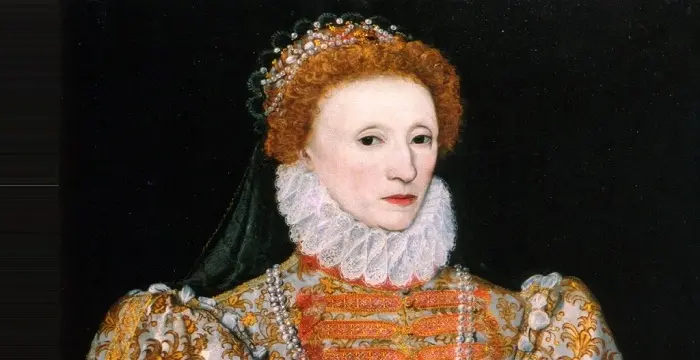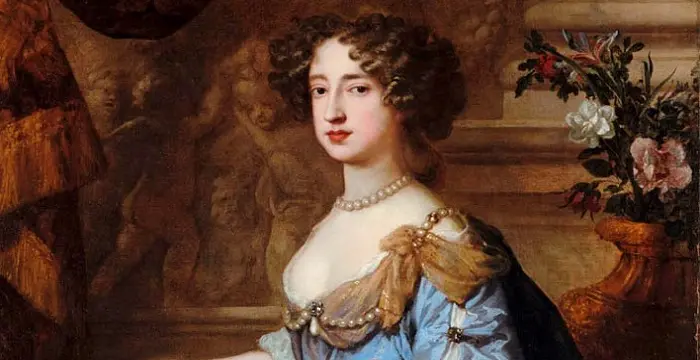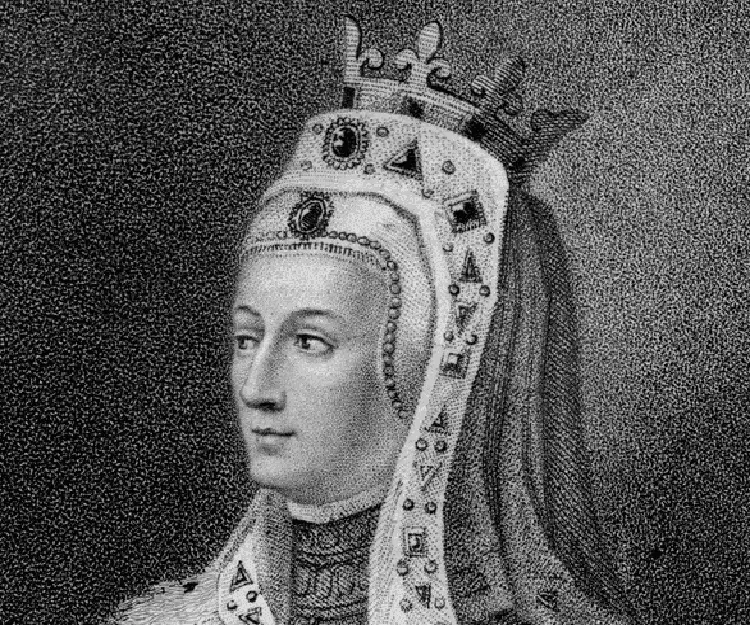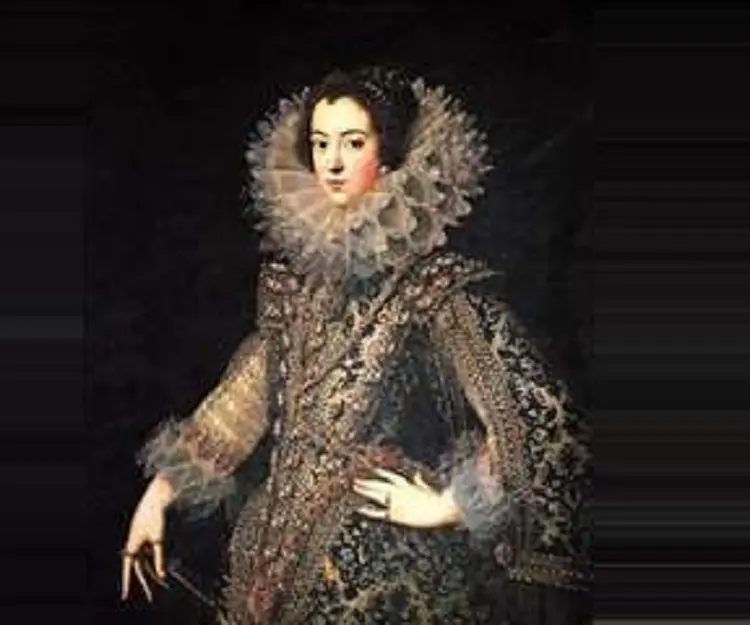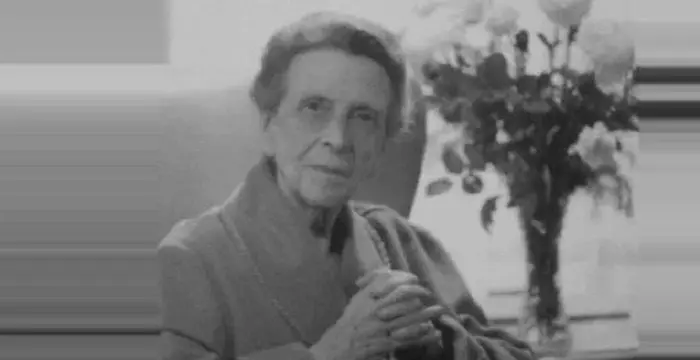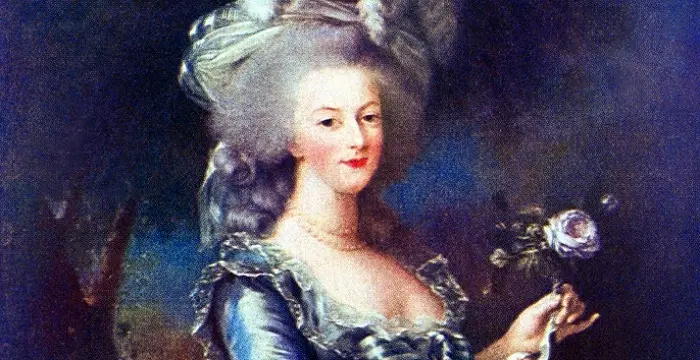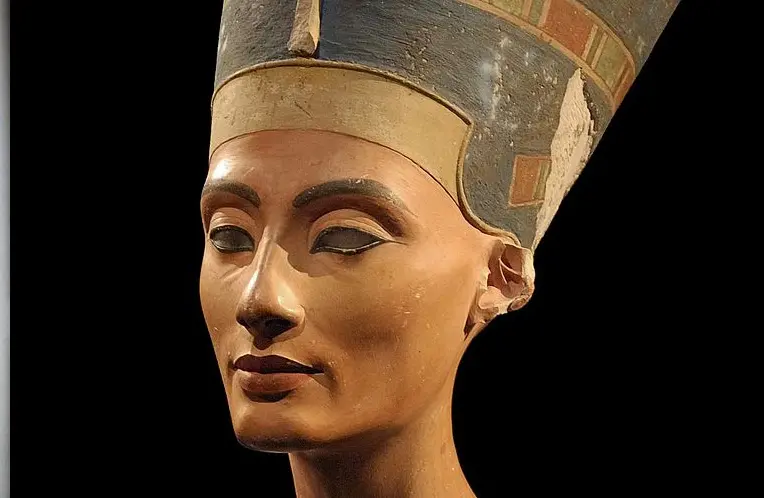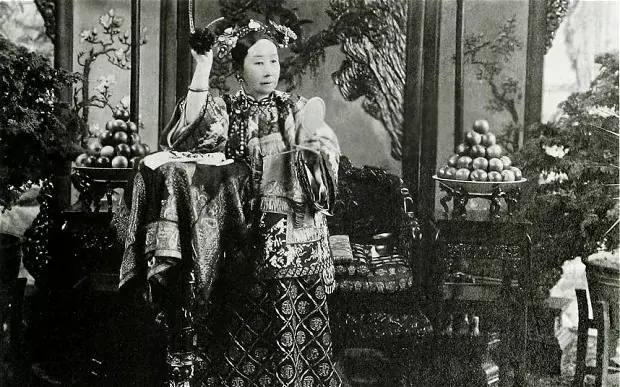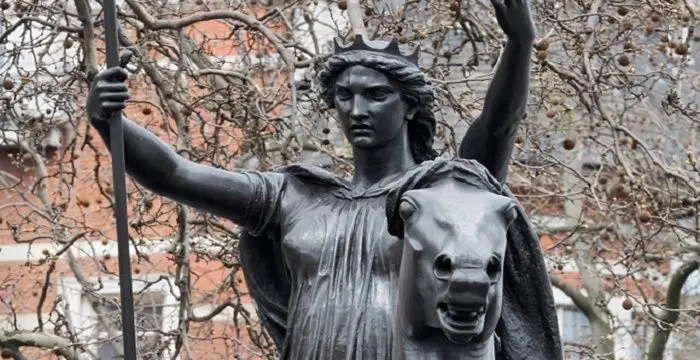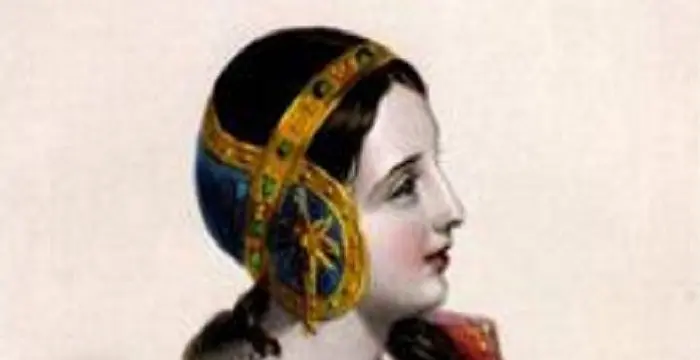
Isabella of France - Empresses, Birthday and Childhood
Isabella of France's Personal Details
Isabella of the Royal House of Capet was a Queen of England through her marriage
| Information | Detail |
|---|---|
| Birthday | 1295 |
| Died on | August 22, 1358 |
| Nationality | French |
| Famous | Historical Personalities, Empresses & Queens, Empresses, Queen of England, Queens |
| Spouses | Edward II of England |
| Known as | She-Wolf of France, Isabella of the Royal House of Capet |
| Childrens | Edward III of England |
| Birth Place | France |
| Gender | Female |
| Father | Philip IV of France |
| Mother | Joan I of Navarre |
| Born in | France |
| Famous as | Queen of England |
| Died at Age | 63 |
// Famous Queen of England
Elizabeth I of England
Elizabeth I was the Queen of England whose reign of 45 years is popularly referred to as the Elizabethan Era. Read in details about her life, career and timeline
Anne Neville
Anne Neville was an English Queen. This biography profiles her childhood, family, marriages, life history, achievements, timeline and other facts.
Mary II of England
Mary II served as the joint sovereign of England, Scotland and Ireland along with her husband, William II. Read this biography to know in details about her life, profile and timeline
Isabella of France's photo
Who is Isabella of France?
Isabella of the Royal House of Capet was a French princess by birth and through marriage the Queen Consort of Edward II, and later the regent for her son, Edward III. Known for her beauty, diplomatic skills, and intelligence, she played a crucial role in the dethronement of her husband. She was the daughter of Philip IV of France and Joan I of Navarre. A diligent student, she received the proper education fit for a girl of noble birth of her time. She was married to Edward at the age of 12. Since the very day of the wedding, she had to compete for her husband’s affection with his favourite, Piers Gaveston. The kingdom was in turmoil with growing hostility between the king and the baronial factions. She supported her husband at the beginning, while consolidating power for herself. But when Gaveston was put to death by the barons and Edward’s attention shifted to a new favourite, Hugh Despenser the Younger, she decided to take things in her own hands. She then went to France under the pretext of diplomacy, started a passionate relationship with Roger Mortimer, and invaded England with a small group of mercenaries. After several quick victories, she overthrew Edward and put their son Edward III on the throne. Acting as his regent, she implemented several policies, which, while unpopular, were extremely effective and pragmatic. Edward III, upon turning 18, took back his authority and removed both Mortimer and Isabella from positions of power, executing the former and exiling the latter from the court. In cultural depictions, she is often portrayed as a ‘femme fatale’, a beautiful but dangerous and deceitful figure.
// Famous Queens
Jetsun Pema
Jetsun Pema is the Queen consort of Bhutan. Check out this biography to know about her childhood, family life, achievements and fun facts about her life.
Princess Alice of Battenberg
Princess Andrew of Greece and Denmark, also known as Princess Victoria Alice Elizabeth Julia Marie of Battenberg, was the mother of Prince Philip, Duke of Edinburgh and mother-in-law of Queen Elizabeth II. This biography profiles her childhood, famil
Marie Antoinette
Marie Antoinette was the Queen of France and Navarre from 1774 to 1792. who played a major role in provoking the French Revolution. This biography of Marie Antoinette provides detailed information about her childhood and life
Childhood & Early Life
Isabella’s birth date was a matter of disagreement even among her contemporaries. According to English historian and chronicler Peter Langtoft and the Annals of Wigmore, she was born sometime in 1292. And yet, French chroniclers such as Guillaume de Nangis and Thomas Walsingham state that she was 12 at the time of her marriage in 1308, implying 1295 as the year of her birth. Modern historians generally hold the latter to be true, theorizing that she was born between May and November of 1295 in Paris.
Her father was Philip IV, King of France, and her mother was Joan of Navarre. She had three brothers, Louis, Philip, and Charles, who were successively the kings of France. She lost her mother in the early years of her life, in 1305. Some sources implicate Philip in her mother’s death, albeit without any real evidence.
She grew up in and around the Château du Louvre and the Palais de la Cité in Paris, under the care of her nurse, Théophania de Saint-Pierre. She was allowed a modest education in her youth, learning to read and write, developing a craving for knowledge.
France was the most powerful country in the Western Europe back then. King Philip had methodically centralised power and authority through treaties and by engaging in a series of conflicts to amass control over the region. As it was common for the period, Philip arranged for all his children to be married early for political benefit.
The Plantagenet dynasty was at the height of its power with Edward Longshanks as the King of England. They had put forth claims on Anjou, Normandy, and Aquitaine and controlled Gascony, lands that had traditionally been French. To Philip, the prospect of a union between Isabella and Longshanks’ son Edward promised an end to the hostility with England. Pope Boniface VIII gave his assent and implored for the marriage to take place as early as in 1298.
But Longshanks seemed to have other political ambitions. He tried to end the engagement several times. It was only after his death in 1307, that they could go forward with the wedding.
Marriage & Rise to Power
The marriage ceremony between Isabella and Edward took place in Boulogne-sur-Mer on January 25, 1308. As a wedding gift, Edward presented Isabella with a psalter. Philip lavished her with gifts worth over 21,000 livres and gave her a piece of the True Cross. Married at just 12, she was praised by Geoffrey of Paris who called her "the beauty of beauties... in the kingdom if not in all Europe.” This was probably not an exaggeration, as it was often said that she had inherited her father’s good looks. Edward would later give her the nickname “Isabella the Fair”.
It would not be wrong to presume that at the beginning of their marriage, Isabella genuinely liked her husband. He was tall, athletic, and handsome and had the support of people and nobility alike. She soon realised, however, that Edward was an unusual man by medieval standards. He preferred music, arts, and rural crafts over jousting, hunting, and warfare, the conventional pastimes of the kings. Furthermore, his relationship with his favourite, Piers Gaveston, garnered much speculation.
During their wedding celebration, Edward decided to sit with Gaveston and not with Isabella, for which her uncles Count Louis of Evreux and Count Charles of Valois took offence. She was given neither her own lands nor her own household until Philip intervened on her behalf.
Whether Edward and Gaveston’s relationship was sexual in nature, is a matter of scholastic debate. There are contemporary accounts that had condemned the king for loving his succession of male favourites “beyond measure” and “uniquely”, while a few others went as far as calling it as an “illicit and sinful union”.
Isabella herself had a complicated relationship with Gaveston. Her father gave financial support to the anti-Gaveston faction at the English court through Isabella and her household, which eventually led to Edward being forced to banish him to Ireland for a brief period. Upon his return, around 1309-11, the three found enough commonality to form an alliance together.
This angered Gaveston’s greatest critic, Thomas of Lancaster. After a failed campaign against the Scots in 1311, a civil war between the Crown and the barons became very much a possibility. Edward’s decision to fight the barons resulted in disaster. While he managed to escape, Gaveston was captured and subsequently executed by Lancaster and his accomplice, Guy de Beauchamp.
This was probably the happiest time in her entire married life. The contender for her husband’s affection was gone and in 1312, she gave birth to their first child, a son, the future Edward III. She worked tirelessly to secure her husband’s throne and repeatedly reached out to France for support. She accumulated the backing of de Beaumont family for herself, developing a close friendship with Isabella de Vesci, sister of Henry de Beaumont.
One of the staunchest allies of Edward and Gaveston was the Despenser family, whose enmity with the Lancasters meant their swift rise to the king’s inner circle of trusted noblemen. Their patriarch, Hugh de Despenser’s son Hugh the younger became the new favourite of the King. As with Gaveston, speculations about the nature of the relationship ensued. Unlike with Gaveston, Isabella soon discovered that co-existence with Despenser was impossible.
In 1321, yet another one of Edward’s Scottish campaigns ended in failure and Isabella barely escaped capture, if only by her own ingenuity. This dealt the final blow to an already deteriorating marriage. She was furious and accused Edward of abandoning her to the Scots. The diplomatic relation between France and England was worsening as well. In 1325, she travelled to France as a delegate for her husband.
Deposition of Edward II
Isabella’s brother, the new French King Charles IV, had confiscated all of Edward’s possessions in the country for failing to pay homage to him. In retaliation, all of Isabella’s lands were seized by Edward and the Despensers, and her children taken away. Soon after reaching France, she signed a treaty with her brother promising her son Edward would pay homage on his father’s behalf. Prince Edward was sent to his mother, and in September, he pay homage to the French King.
In the following months, instead of returning to England, Isabella firmly stayed in France. Edward’s political rivals including Edmund of Kent; John of Brittany, Earl of Richmond; and Roger Mortimer of Wigmore gathered one after another at the French court conveying their support for the Queen. She started to dress as a widow, putting the blame of the dissolution of her marriage on the Despensers. In December, she took Mortimer as a lover.
In the summer of 1326, Isabella and Mortimer went to William I, Count of Hainaut and arranged a betrothal between Prince Edward and the Count’s daughter, Philippa. With the dowry received from the engagement and the money she had previously got from her brother as a loan, she assembled a mercenary army.
On September 29, Isabella, Mortimer, and their army landed on the English shore. The following campaign was short, brutal, and effective. Edward was overthrown and most of the male members of the Despenser family, including the Elder and Younger Hugh Despenser, were executed.
Edward’s fate after his removal from the throne remains a mystery till date. Henry of Lancaster had him in his custody and sent his Royal Seal to the Queen. In January 1327, the English parliament declared Prince Edward as Edward III and Isabella as his regent. But she still feared that her enemies might rally behind the deposed king. Edward was moved to Berkeley Castle, and on September 23, the royal family was informed of his death.
Most historians agree that Edward either died of natural causes or was killed on Isabella’s orders. A few such as Paul Doherty and Ian Mortimer believe that Edward escaped from Berkeley and lived his life out in hiding, drawing their conclusion from the famous Fieschi Letter.
Regency, Later Life & Death
For the next four years, Isabella ruled in her son’s name and Mortimer virtually served as her first minister. It was not only her looks that she had inherited from Philip, but also his obsession for lands and wealth. She grew incredibly rich in these years, earning more than £13,000 a year from her holdings.
She made the Treaty of Northampton with the Scots, ending years of bloodshed. It ended up turning many English barons against her as they had to forego their claims on lands in Scotland.
Edward III, at 18, had become increasing frustrated with Mortimer and his hold on power. With the help of the nobility who had their own cause of resentment towards the regent and her lover, he organised a coup and successfully deposed Isabella and Mortimer. In December 1330, Mortimer was put to death at Tyburn for treason. Isabella, characterized as an innocent victim, was banished from the royal court.
She spent the rest of her life in comfort. She stayed at the Castle Rising in Norfolk, where she was often visited by her children and grandchildren. In the last years of her life she joined the Order of Saint Clare.
At the age of 62 or 63, she passed away on August 22, 1358 at Hertford Castle. She was buried in her wedding mantle at the Franciscan church at Newgate. In accordance to her wish, Edward II’s heart, which had been put in a casket following his death, was buried along with her.
Legacy
Besides Edward III, Isabella had three other children with Edward II: John of Eltham, Earl of Cornwall (born 1316), Eleanor of Woodstock (1318), and Joan of the Tower (1321).
Isabella is one of the main protagonists of Christopher Marlowe’s tragedy ‘Edward II’ (c. 1592). Marlowe’s Isabella is a complex and at times, inconsistent character. She also appears in a major role in Ben Jonson’s unfinished play ‘Mortimer His Fall’ (published 1641).
The epithet ‘She-Wolf’ was first used to describe Isabella by the 18th-century English poet Thomas Gray in his anti-French poem ‘The Bard’ (1757). He merged Marlowe’s characterization of Isabella with Shakespeare’s portrayal of Margaret of Anjou as the ‘She-Wolf of France’ in his first tetralogy of historical plays, Henry VI, Part 1, Part 2, Part 3, and Richard III. The poem depicts Isabella ripping open her husband’s bowels with her “unrelenting fangs”. German playwright Bertolt Brecht used the epithet again in his adaptation of Marlowe’s work.
Trivia
In 1314, Isabella ostensibly deduced that her sister-in-laws were having affairs with two Norman knights and informed her father. The following scandal has come to be known as the ‘Tour de Nesle Affair’.
// Famous Empresses
Jetsun Pema
Jetsun Pema is the Queen consort of Bhutan. Check out this biography to know about her childhood, family life, achievements and fun facts about her life.
Princess Alice of Battenberg
Princess Andrew of Greece and Denmark, also known as Princess Victoria Alice Elizabeth Julia Marie of Battenberg, was the mother of Prince Philip, Duke of Edinburgh and mother-in-law of Queen Elizabeth II. This biography profiles her childhood, famil
Marie Antoinette
Marie Antoinette was the Queen of France and Navarre from 1774 to 1792. who played a major role in provoking the French Revolution. This biography of Marie Antoinette provides detailed information about her childhood and life
Isabella of France biography timelines
- // 1295Isabella’s birth date was a matter of disagreement even among her contemporaries. According to English historian and chronicler Peter Langtoft and the Annals of Wigmore, she was born sometime in 1292. And yet, French chroniclers such as Guillaume de Nangis and Thomas Walsingham state that she was 12 at the time of her marriage in 1308, implying 1295 as the year of her birth. Modern historians generally hold the latter to be true, theorizing that she was born between May and November of 1295 in Paris.
- // 1298The Plantagenet dynasty was at the height of its power with Edward Longshanks as the King of England. They had put forth claims on Anjou, Normandy, and Aquitaine and controlled Gascony, lands that had traditionally been French. To Philip, the prospect of a union between Isabella and Longshanks’ son Edward promised an end to the hostility with England. Pope Boniface VIII gave his assent and implored for the marriage to take place as early as in 1298.
- // 1305Her father was Philip IV, King of France, and her mother was Joan of Navarre. She had three brothers, Louis, Philip, and Charles, who were successively the kings of France. She lost her mother in the early years of her life, in 1305. Some sources implicate Philip in her mother’s death, albeit without any real evidence.
- // 1307But Longshanks seemed to have other political ambitions. He tried to end the engagement several times. It was only after his death in 1307, that they could go forward with the wedding.
- // 25th Jan 1308The marriage ceremony between Isabella and Edward took place in Boulogne-sur-Mer on January 25, 1308. As a wedding gift, Edward presented Isabella with a psalter. Philip lavished her with gifts worth over 21,000 livres and gave her a piece of the True Cross. Married at just 12, she was praised by Geoffrey of Paris who called her "the beauty of beauties... in the kingdom if not in all Europe.” This was probably not an exaggeration, as it was often said that she had inherited her father’s good looks. Edward would later give her the nickname “Isabella the Fair”.
- // 1309 To 1311Isabella herself had a complicated relationship with Gaveston. Her father gave financial support to the anti-Gaveston faction at the English court through Isabella and her household, which eventually led to Edward being forced to banish him to Ireland for a brief period. Upon his return, around 1309-11, the three found enough commonality to form an alliance together.
- // 1311This angered Gaveston’s greatest critic, Thomas of Lancaster. After a failed campaign against the Scots in 1311, a civil war between the Crown and the barons became very much a possibility. Edward’s decision to fight the barons resulted in disaster. While he managed to escape, Gaveston was captured and subsequently executed by Lancaster and his accomplice, Guy de Beauchamp.
- // 1312This was probably the happiest time in her entire married life. The contender for her husband’s affection was gone and in 1312, she gave birth to their first child, a son, the future Edward III. She worked tirelessly to secure her husband’s throne and repeatedly reached out to France for support. She accumulated the backing of de Beaumont family for herself, developing a close friendship with Isabella de Vesci, sister of Henry de Beaumont.
- // 1314In 1314, Isabella ostensibly deduced that her sister-in-laws were having affairs with two Norman knights and informed her father. The following scandal has come to be known as the ‘Tour de Nesle Affair’.
- // 1321 To 1325In 1321, yet another one of Edward’s Scottish campaigns ended in failure and Isabella barely escaped capture, if only by her own ingenuity. This dealt the final blow to an already deteriorating marriage. She was furious and accused Edward of abandoning her to the Scots. The diplomatic relation between France and England was worsening as well. In 1325, she travelled to France as a delegate for her husband.
- // 1326In the summer of 1326, Isabella and Mortimer went to William I, Count of Hainaut and arranged a betrothal between Prince Edward and the Count’s daughter, Philippa. With the dowry received from the engagement and the money she had previously got from her brother as a loan, she assembled a mercenary army.
- // Jan 1327Edward’s fate after his removal from the throne remains a mystery till date. Henry of Lancaster had him in his custody and sent his Royal Seal to the Queen. In January 1327, the English parliament declared Prince Edward as Edward III and Isabella as his regent. But she still feared that her enemies might rally behind the deposed king. Edward was moved to Berkeley Castle, and on September 23, the royal family was informed of his death.
- // Dec 1330Edward III, at 18, had become increasing frustrated with Mortimer and his hold on power. With the help of the nobility who had their own cause of resentment towards the regent and her lover, he organised a coup and successfully deposed Isabella and Mortimer. In December 1330, Mortimer was put to death at Tyburn for treason. Isabella, characterized as an innocent victim, was banished from the royal court.
- // 22nd Aug 1358At the age of 62 or 63, she passed away on August 22, 1358 at Hertford Castle. She was buried in her wedding mantle at the Franciscan church at Newgate. In accordance to her wish, Edward II’s heart, which had been put in a casket following his death, was buried along with her.
// Famous Empresses & Queens
Jetsun Pema
Jetsun Pema is the Queen consort of Bhutan. Check out this biography to know about her childhood, family life, achievements and fun facts about her life.
Princess Alice of Battenberg
Princess Andrew of Greece and Denmark, also known as Princess Victoria Alice Elizabeth Julia Marie of Battenberg, was the mother of Prince Philip, Duke of Edinburgh and mother-in-law of Queen Elizabeth II. This biography profiles her childhood, famil
Marie Antoinette
Marie Antoinette was the Queen of France and Navarre from 1774 to 1792. who played a major role in provoking the French Revolution. This biography of Marie Antoinette provides detailed information about her childhood and life
Nefertiti
Neferneferuaten Nefertiti was an Egyptian queen and chief consort of Akhenaten, an Egyptian Pharaoh. This biography profiles her childhood, family, life as queen, accomplishments, death, and other facts.
Empress Dowager Cixi
Empress Dowager Cixi was a Chinese empress dowager and regent of the Qing Dynasty. This biography profiles her childhood, rise to power, rule, administration and other interesting facts.
Boudica
Boudica was a queen of the Celtic Icenic tribe, who led an uprising against Roman invaders. Check out this biography to know about her childhood, family, achievements, etc.
Isabella of France's FAQ
When was Isabella of France died?
Isabella of France was died at 1358-08-22
Which age was Isabella of France died?
Isabella of France was died at age 63
Where is Isabella of France's birth place?
Isabella of France was born in France
What is Isabella of France nationalities?
Isabella of France's nationalities is French
Who is Isabella of France spouses?
Isabella of France's spouses is Edward II of England
Who is Isabella of France childrens?
Isabella of France's childrens is Edward III of England
Who is Isabella of France's father?
Isabella of France's father is Philip IV of France
Who is Isabella of France's mother?
Isabella of France's mother is Joan I of Navarre
How famous is Isabella of France?
Isabella of France is famouse as Queen of England
